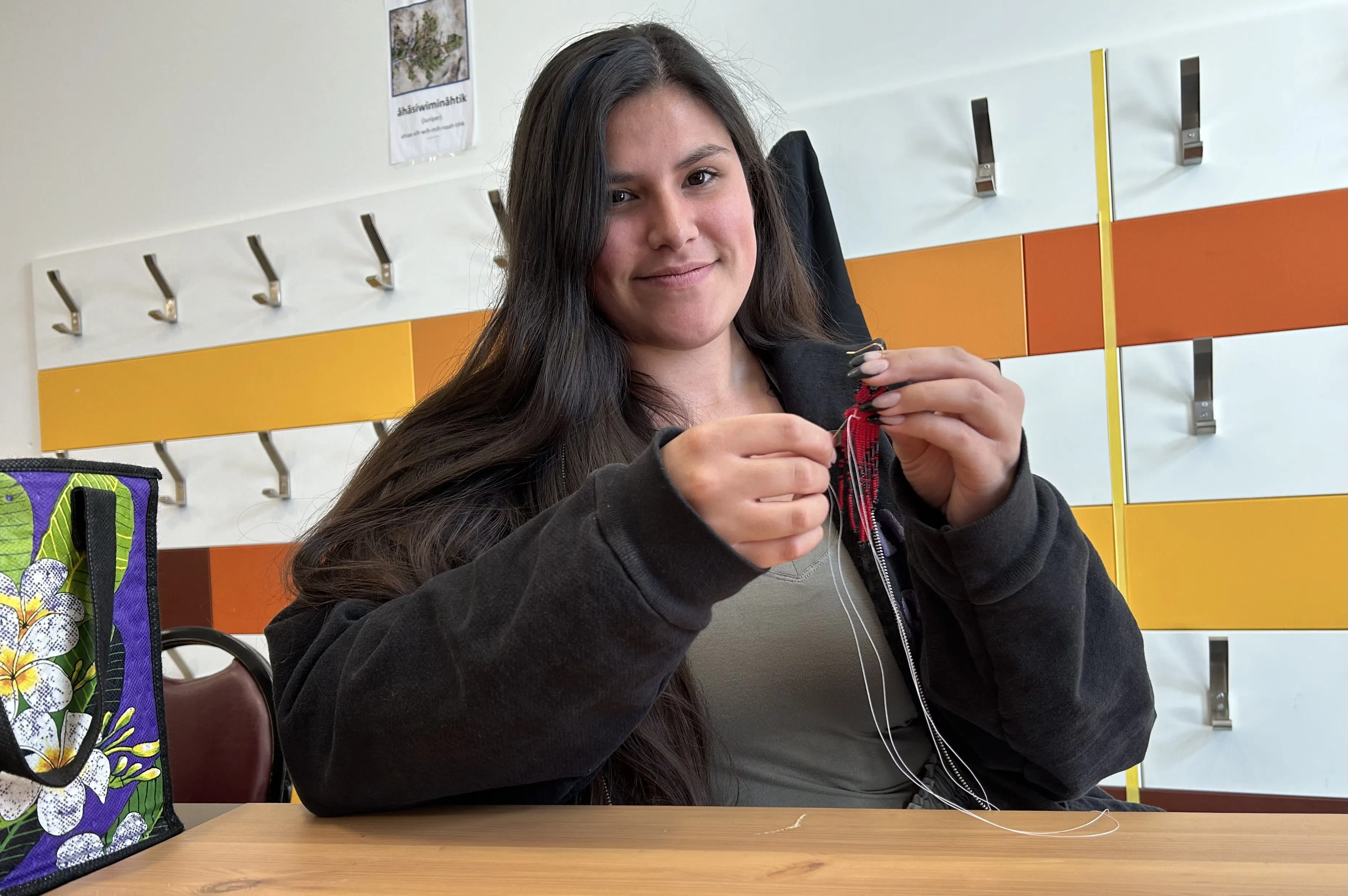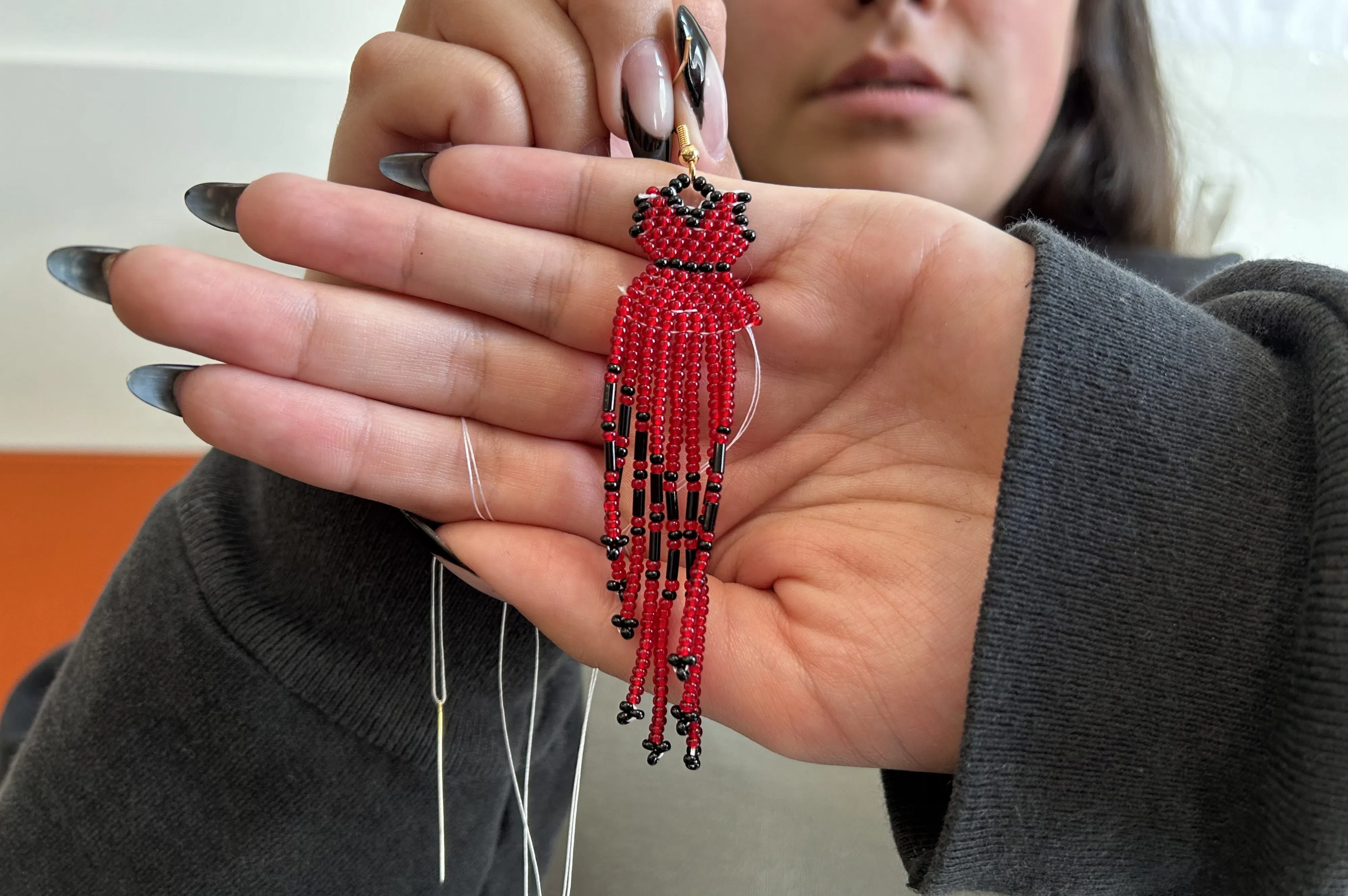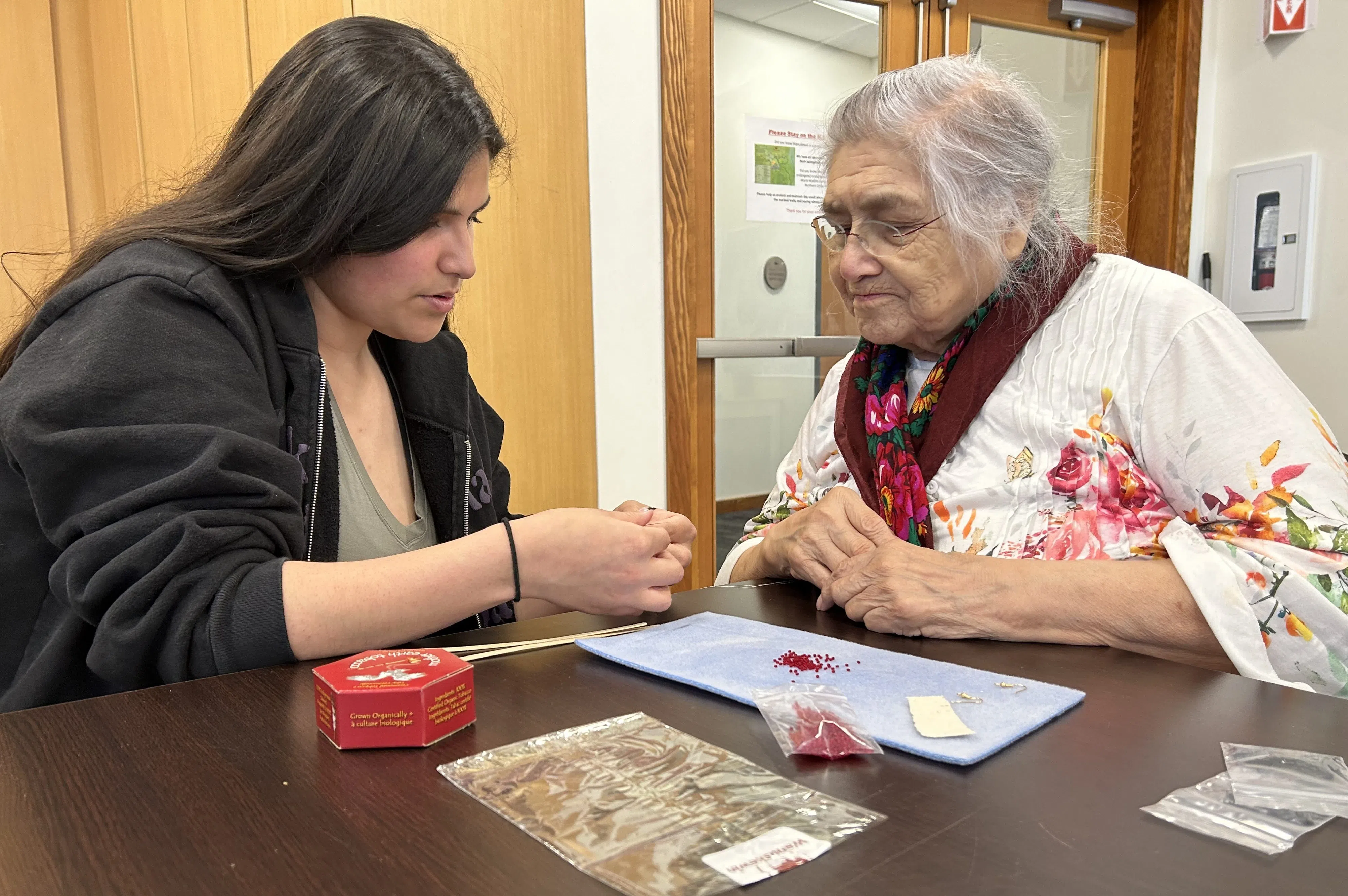For Chanelle Gamble, Red Dress Day is far more than just another day.
“I’m very passionate about this, because I’ve had some of my family members who have gone missing and who have been murdered as well,” she said.
The National Day of Awareness for Missing and Murdered Indigenous Women, Girls and Two-Spirit People — otherwise known as Red Dress Day — is held annually on May 5.
A Statistics Canada report from last year showed that Indigenous women and girls were murdered at a rate six times higher than those who were not Indigenous.
Gamble, a 23-year-old Plains Cree woman who works at Wanuskewin Heritage Park as an Interpretive Guide and a fancy shawl dancer, said the statistics surrounding missing and murdered Indigenous women have left a sense of fear hanging over her as she navigates life.
“It makes me fearful to even go anywhere by myself,” she said.
She led her very first workshop at Wanuskewin on Sunday, honouring the cause that is so close to her heart by sharing her knowledge and teaching a group of people how to create beaded red dress earrings.
“I taught myself how to make this design in support of the cause, and I wanted to be able to teach other people,” she said, adding that the earrings are great conversation starters.
“Wearing a piece of jewelry that shows the red dress makes people curious. They wonder ‘What does that mean? Why the red dress?'”

Chanelle Gamble, 23, works at Wanuskewin Heritage Park as an Interpretive Guide and a Fancy Shawl Dancer. On Sunday she led her very first workshop at the park, teaching attendees how to make beaded red dress earrings. (Brittany Caffet/650 CKOM)
The first Red Dress Day took place in 2014, inspired by the work of Canadian Métis artist Jaime Black.
Black took hundreds of red dresses and hung them in public places to represent missing and murdered Indigenous women. The art installation turned the red dress into a symbol that represents the epidemic of missing and murdered Indigenous women.
“It represents how the women should be wearing that dress,” said Gamble. “They shouldn’t be missing. They shouldn’t be murdered.”
Over the years, many people have expressed their support on Red Dress Day by hanging red dresses outside of their homes or wearing articles of clothing or jewelry to commemorate the day.
Thanks to Gamble, the group of women who attended the workshop now have their own red dress earrings to wear.
Those taking part in the workshop said they were grateful for the opportunity to learn, and will be wearing their new earrings with pride.

The group made beaded red dress earrings in honour of the National Day of Awareness for Missing and Murdered Indigenous Women, Girls and Two-Spirit People. (Brittany Caffet/650 CKOM)
Gamble said she believes items created in recognition of Red Dress Day are for everyone to wear, not just those of Indigenous heritage.
“If you want to wear red dress earrings or a ribbon skirt, by all means wear a ribbon skirt. Just showing that support is really what’s important,” she said.
She also said these items should be worn year round — not only on May 5 — to help raise awareness of the issue.
“Those women should be honoured every single day,” she said. “That’s the goal of this project.”











